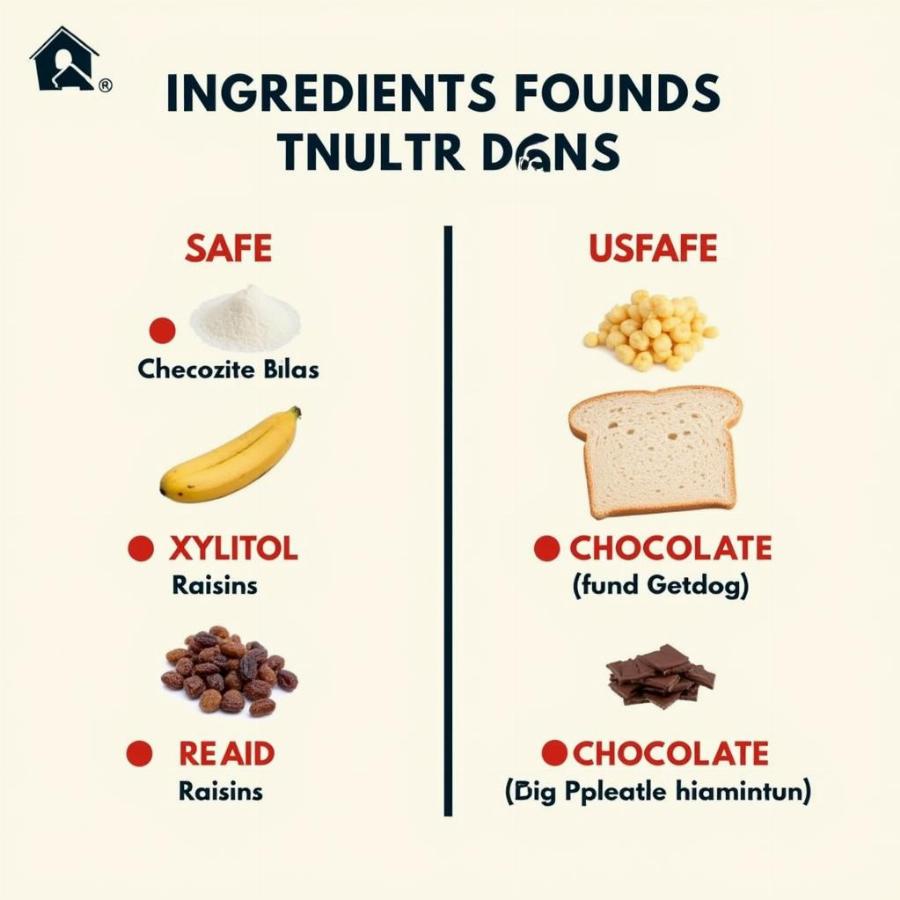If your dog ate bread, your first reaction might be panic. But take a deep breath! This article dives into everything you need to know about dogs and bread, from the potential risks to when it’s okay to share a slice (or not). We’ll cover different types of bread, potential hazards, and what to do if your furry friend gobbles down more than they should.
Understanding the Impact of Bread on Dogs
While a small amount of plain white bread is generally not toxic to dogs, it doesn’t offer any nutritional value. Think of it as empty calories for your canine companion. Too much bread can lead to weight gain and other health issues. Moreover, certain ingredients commonly found in bread can be harmful to dogs.
Is All Bread Created Equal for Dogs?
Different types of bread pose different risks. While plain white bread is generally safe in small quantities, bread dough is a definite no-no. The yeast in the dough can expand in your dog’s stomach, causing bloating, pain, and even alcohol poisoning. dog ate loaf of bread explores this topic further. Similarly, breads containing raisins, nuts, or chocolate can be toxic. Raisins and grapes can cause kidney failure, while chocolate and certain nuts are toxic to dogs.
Identifying Dangerous Ingredients in Bread
Always check the ingredient list before giving your dog any bread. Xylitol, an artificial sweetener, is extremely dangerous for dogs, even in small amounts. It can cause liver failure and hypoglycemia (low blood sugar). hot dog rolls often contain added sugars, so be cautious.
 Thành phần bánh mì cho chó
Thành phần bánh mì cho chó
What to Do If Your Dog Ate Bread
If your dog ate a small amount of plain bread, they’ll likely be fine. Monitor them for any unusual symptoms like vomiting, diarrhea, or lethargy. If your dog consumed a large quantity of bread, especially if it contained harmful ingredients like xylitol, contact your veterinarian immediately. Time is of the essence in such situations.
Signs of Bread-Related Distress in Dogs
Knowing the signs of potential problems can help you react quickly. Symptoms to watch for include:
- Bloating: A distended abdomen, especially after consuming bread dough.
- Vomiting: Could indicate an upset stomach or a reaction to a harmful ingredient.
- Diarrhea: Another sign of digestive upset.
- Lethargy: Unusual tiredness or lack of energy.
- Tremors: A possible sign of xylitol poisoning.
Preventing Future Bread Binges
The best way to deal with a dog eating bread is to prevent it from happening in the first place. Store bread and baked goods securely where your dog can’t reach them. Educate your family members, especially children, about the potential dangers of feeding bread to dogs.
Conclusion: Bread and Dogs – A Cautious Approach
While a small piece of plain bread might not harm your dog, it’s best to err on the side of caution. brioche hot dog buns and other enriched breads are particularly risky. Focus on feeding your dog a balanced diet formulated for their specific needs. If you’re ever unsure about what your dog can eat, consult your veterinarian. They can provide personalized guidance to ensure your furry friend stays happy and healthy.
FAQ
- Can dogs eat whole wheat bread? Small amounts are generally okay, but it’s less digestible than white bread.
- Can dogs eat garlic bread? No, garlic is toxic to dogs.
- What should I do if my dog ate bread dough? Contact your veterinarian immediately.
- Is it okay to give my dog bread as a treat? It’s better to offer healthier dog-specific treats.
- Can dogs be allergic to bread? Yes, some dogs can develop allergies to wheat or other ingredients in bread.
Related Articles
You might also be interested in these articles: can dogs eat pastrami and corn dogs in the air fryer.
Beaut Dogs is your trusted source for all things related to dog care, offering expert advice and a wealth of knowledge. For any questions or concerns about your dog’s health and well-being, please contact us at [email protected]. Beaut Dogs is committed to helping you provide the best possible care for your beloved canine companion.